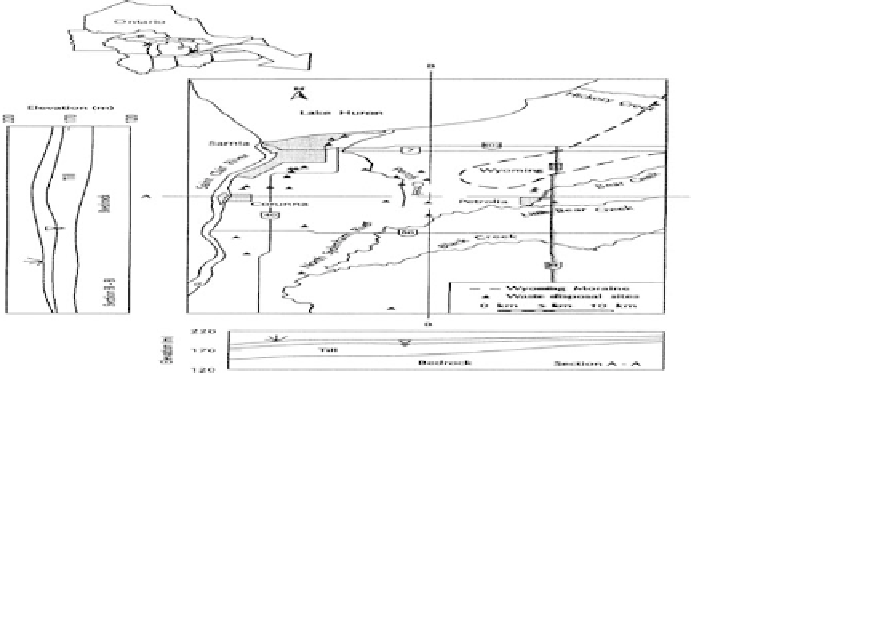Geoscience Reference
In-Depth Information
finite-element and integrated-finite difference method to approximate the
equations that describe the two interdependent processes being simulated.
When used to simulate saltwater movement in the subsurface system in
cross section, the two interdependent processes are the density-dependent
saturated subsurface-water flow and the transport of dissolved solids in
the subsurface water. Either local — or regional — scale sections having
dispersed or relatively sharp transition zones between saltwater and fresh-
water may be simulated. The results of numerical simulation of saltwater
movement show distributions of fluid pressures and dissolved-solid concen-
trations as they vary with time and also show the magnitude and direction
of fluid velocities as they vary with time. Almost subsurface properties
that are entered into the model may vary in value throughout the simu-
lated section. Sources and boundary conditions may vary with time. The
finite-element method using quadrilateral elements allows the simulation of
irregular areas with irregular mesh spacing. The model has been applied to
real field data and observed to give favorable are explained as follows.
5
-
8
3.2.
Case study 1: Lambton County, Ontario, Canada
Lambton County is located in the province of Ontario, Canada (Fig. 3). The
study region occupies most of Lambton County is located along the Saint
Fig. 3. Location of Lambton County, where Sections A-A and B-B show the sur-
face geology and hydrogeology of region in East-West and North-South cross sections
(Piggott, Bobba and Novakowski, 1996).









